GENERAL WAINWRIGHT COMES TO LOUISIANA
BY
RICKEY ROBERTSON
Beginning in 1940 the U.S. Army decided to begin maneuver training in Louisiana so units could update their tactics. As the U.S. Army began to fill its ranks with new draftees, training needed to be given these new recruits. The headquarters for the upcoming maneuvers was be at Camp Beauregard, La. and under the command of Lt. General Stanley Embick. This maneuver put two different corps against one another with 75,000 to 85,000 men involved. As units began to arrive in the maneuver area, here came the 1st Cavalry Brigade from Fort Clark, Texas. The commander of this mounted cavalry unit would become one of World War II's most famous soldiers. The commander bringing in his cavalry brigade to Louisiana was General Jonathan Wainwright.
General Wainwright was a career cavalry officer who was born in Walla Walla, Washington on August 23, 1883. After graduating from high school he entered West Point Military Academy where he graduated in 1906. Upon graduation he was commissioned in the cavalry and served stateside for two years then he went to the Philippine Islands during the Moro Rebellion. Upon returning from the Philippines he graduated from the Mounted Service School at Fort Riley, Kansas. In February 1918 he was ordered to France and in June 1918 he became the Chief of Staff of the U.S. 82nd Infantry Division (Sgt. York's Division). He took part in several campaigns during the war and upon the signing of the Armistice he began duty in the Army of Occupation of Germany until 1920. On his return to the United States over the many years he served in many capacities, all involving the cavalry. In 1938 he was promoted to Brigadier General over the 1st Cavalry Brigade.
During the 1940 maneuvers held during the spring and summer of that year, General Wainwright brought his well-trained, well-equipped, and well-mounted cavalry troopers to Louisiana. This was to be the first organized training exercises held by the army in many years. Many of the units involved were National Guard units that had almost no equipment, very little training, and the cavalry units had almost no horses. During this series of maneuvers there were four separate exercises to test every aspect of these units, from platoon, company, battalion, on up to divisions and to test and evaluate their leadership from non-commissioned officers up to high ranking officers. Many officers did not show any skill in leading their troops but one officer did. He was Jonathan Wainwright.
General Wainwright had probably the best trained unit of the 1940 maneuvers. The 2nd Infantry Division and the 1st Cavalry Division were the only regular army units involved and the 330th, 31st, 36th, and 45th Infantry Divisions were National Guard along with the 23rd Cavalry Division. The 23rd National Guard Cavalry came to Louisiana with very few trained cavalry horses. There were such shortages that army rent and claims officials went throughout the area "renting" horses from every farmer who would rent them to the army during these maneuvers. A plow horse and plow mule have never had the training that the fine regular cavalry mounts and Missouri pack mules had. But the Guardsmen had to have horses! As the maneuvers began, General Wainwright's cavalry troopers were everywhere, right in the midst of every skirmish and continuously scouting for the enemy. The poor rented horses were already overworked and underfed and many, many of these just died as the units advanced to and fro. Cavalry troopers would get off their mounts and hurriedly bury the poor dead rented farm horse or mule. In an interview with retired Sabine Parish Sheriff James A. Brumley Jr. he told the story of living in the Plainview Community of Sabine Parish during these maneuvers while his mother taught in that community school. As a long column of cavalry came by he noticed what looked like little horses running up and down the column. When the Army rented the horses, they took mares, stallions, and geldings. What Mr. Brumley had seen were colts running up down the column with their cavalry mount mothers! Yes farmers, if you have had the same horse blood line for decades at your farm, you may have had a horse who was also a citizen soldier who served in the maneuvers! General Wainwright and his cavalry did exceptionally well and so did he with his leadership. He was an officer who led from the front.
In September 1940 Brigadier General Wainwright was promoted to major General and he was posted to the Philippines where he commanded the Philippine Division, which was made up of the 26th Cavalry, known as the Philippine Scouts. This cavalry unit was mounted on American-bred cavalry mounts and was possibly the best trained unit in the Philippine Army. On December 8th, 1941 the Japanese attacked the Philippines and war began. Immediately the Japanese began to overpower the understrength and under gunned American and Filipino troops. General MacArthur ordered a retreat onto the Bataan Peninsula. But Japanese tank units were about to prevent the troops from getting to Bataan. But General Wainwright's 26th Cavalry performed the last mounted cavalry charge against the Japanese tank column at Morong and held the door open even though they suffered terrible casualties in men and horses. In just weeks the men on Bataan and Corregidor were on short rations, with no help of any kind coming from America. The men named themselves the "Battling Bastards of Bataan…no Momma, no Daddy, no Uncle Sam." But they fought and fought until defeat was inevitable. General MacArthur was ordered to Australia and now Lt. General Jonathan Wainwright became the commander of all forces in the Philippines. Sadly Bataan fell and the Japanese attacked Corregidor where General Wainwright and his men held on. But they had to eventually surrender. General Wainwright and all his command became prisoners of war of the Japanese. Every man captured by the Japanese underwent terrible treatment, with General Wainwright also being given terrible and horrible treatment. But he and thousands of his men held on and upon the surrender of the Japanese, General Wainwright was found alive in a Japanese POW Camp, starved almost to death. But he was tough. He attended the surrender of the Japanese and even later was at the surrender of Japanese General Yamashita in the Philippines. Finally the old soldier came home to a ticker tape parade. And due to his leadership he was presented the Medal of Honor. He was promoted to the Commander of the 4th Army after the war and retired in 1947. This famous old cavalry soldier who came to Louisiana in 1940 sadly passed away on September 2, 1953 and was buried in Arlington National Cemetery. Another officer who perfected his leadership skills and tactics here in Louisiana in the days before World War II began. As it is November let us remember all of our veterans, from all wars, and never forget the sacrifice made so that we can enjoy the freedom's that we have in the United States of America. Thanks General Wainwright and Thanks to All Veterans!
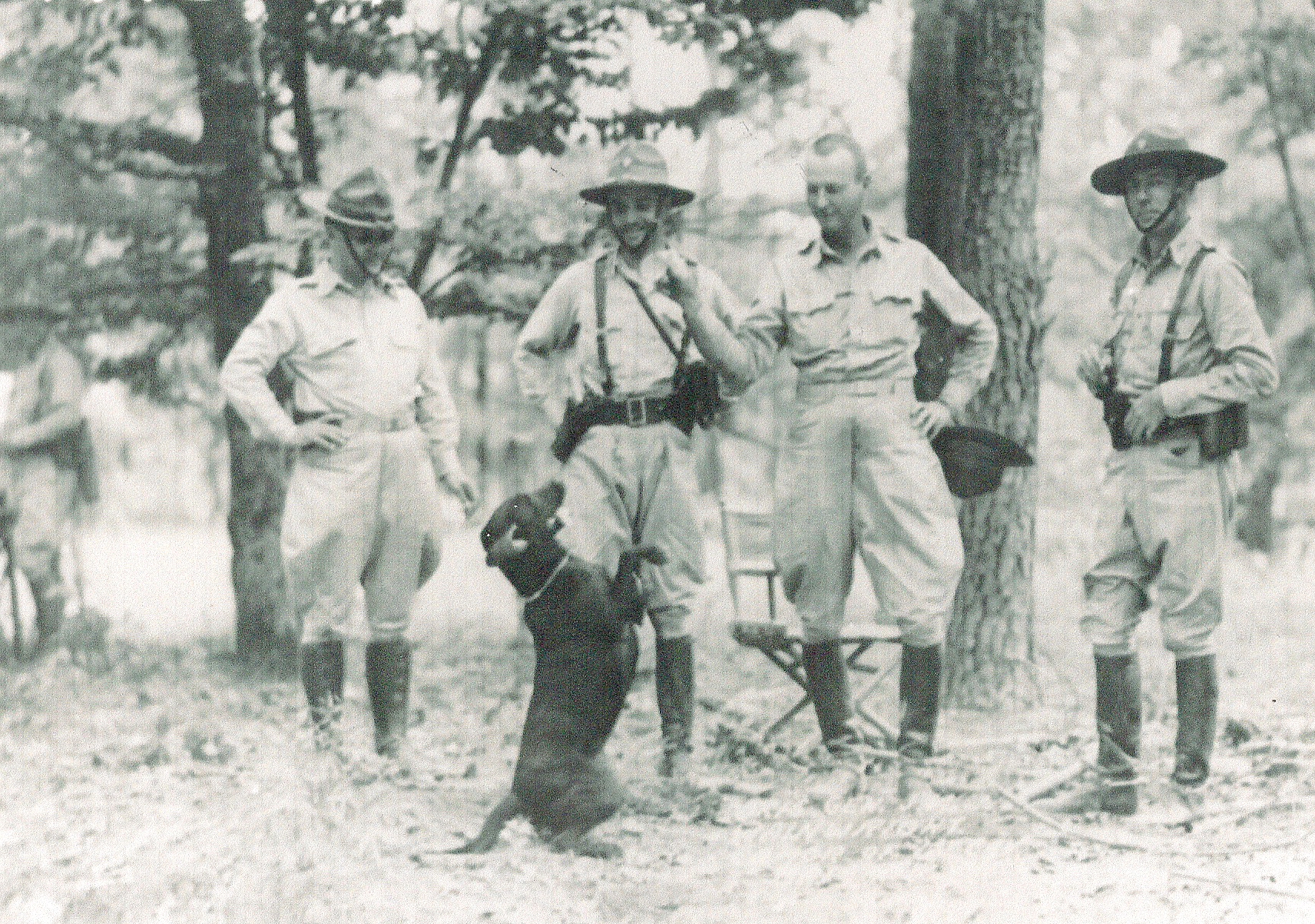
General Jonathan Wainwright and his staff enjoying a stray dog that has came to their bivouac area during the 1940 Maneuvers in Louisiana. General Wainwright loved all animals as shown in this photograph. (Courtesy US Army Ft Polk Museum)
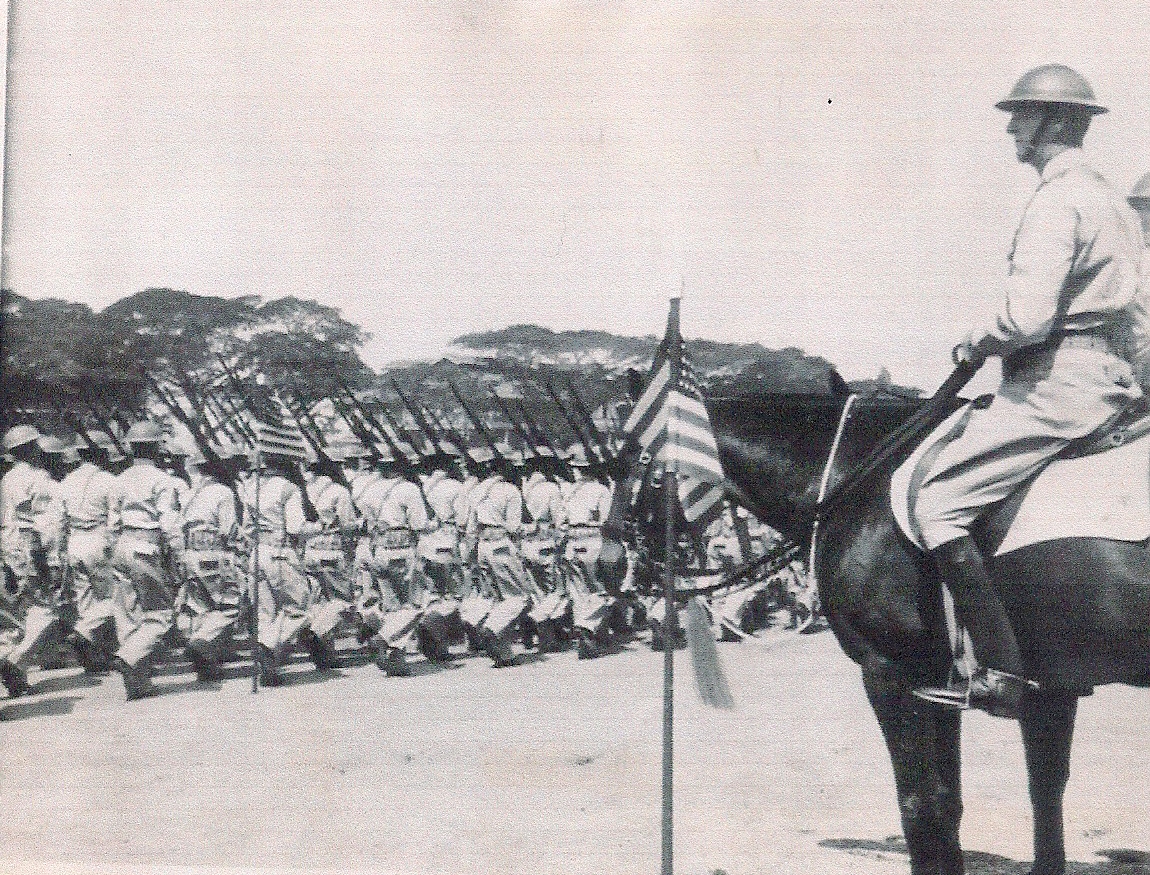
General Wainwright reviews American and Philippine troops at Fort McKinley in July 1941. (Courtesy US Army Ft Polk Museum)
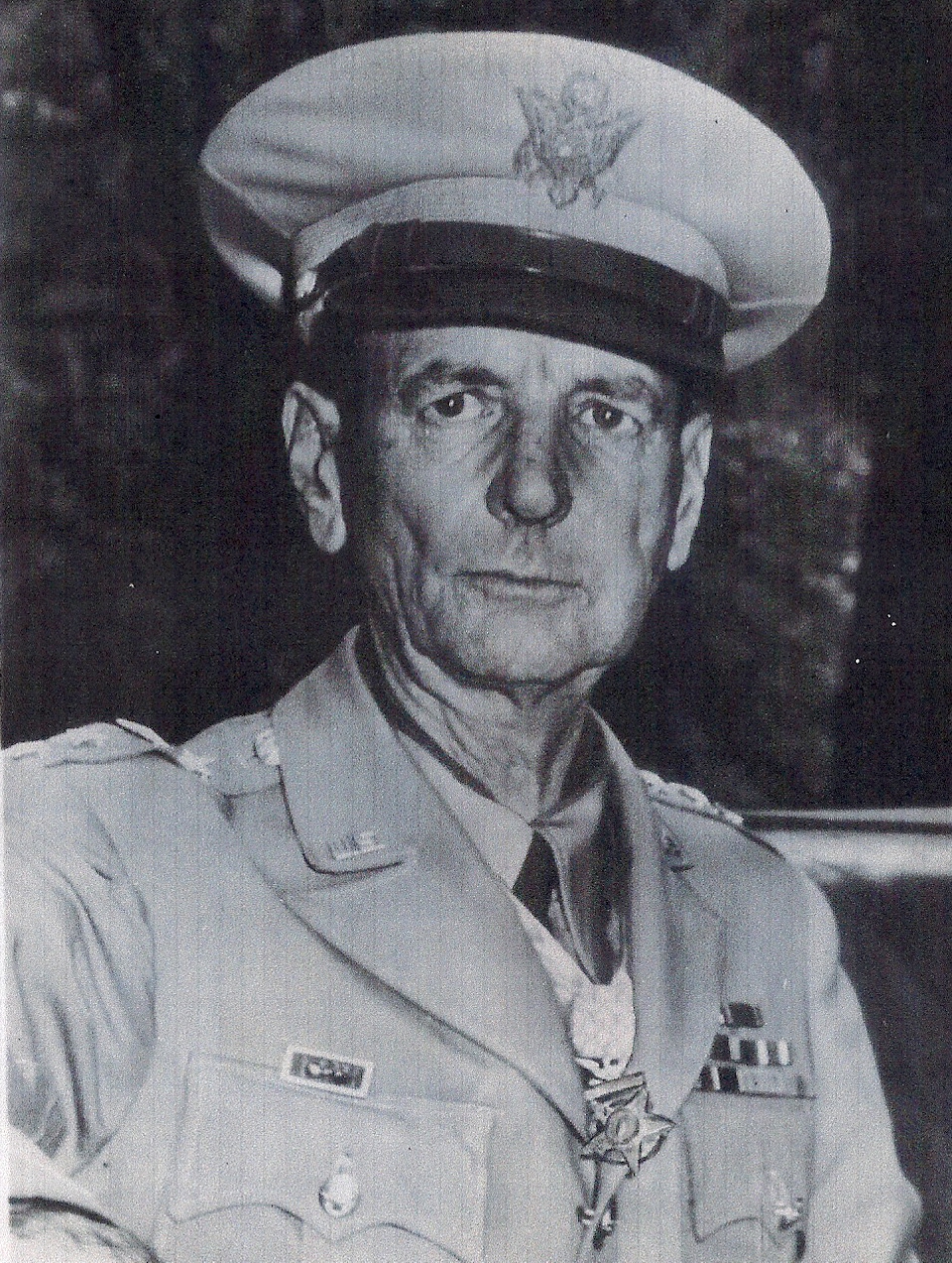
General Jonathan Wainwright pictured with his Medal of Honor after his return to the United States. (Courtesy US Army)
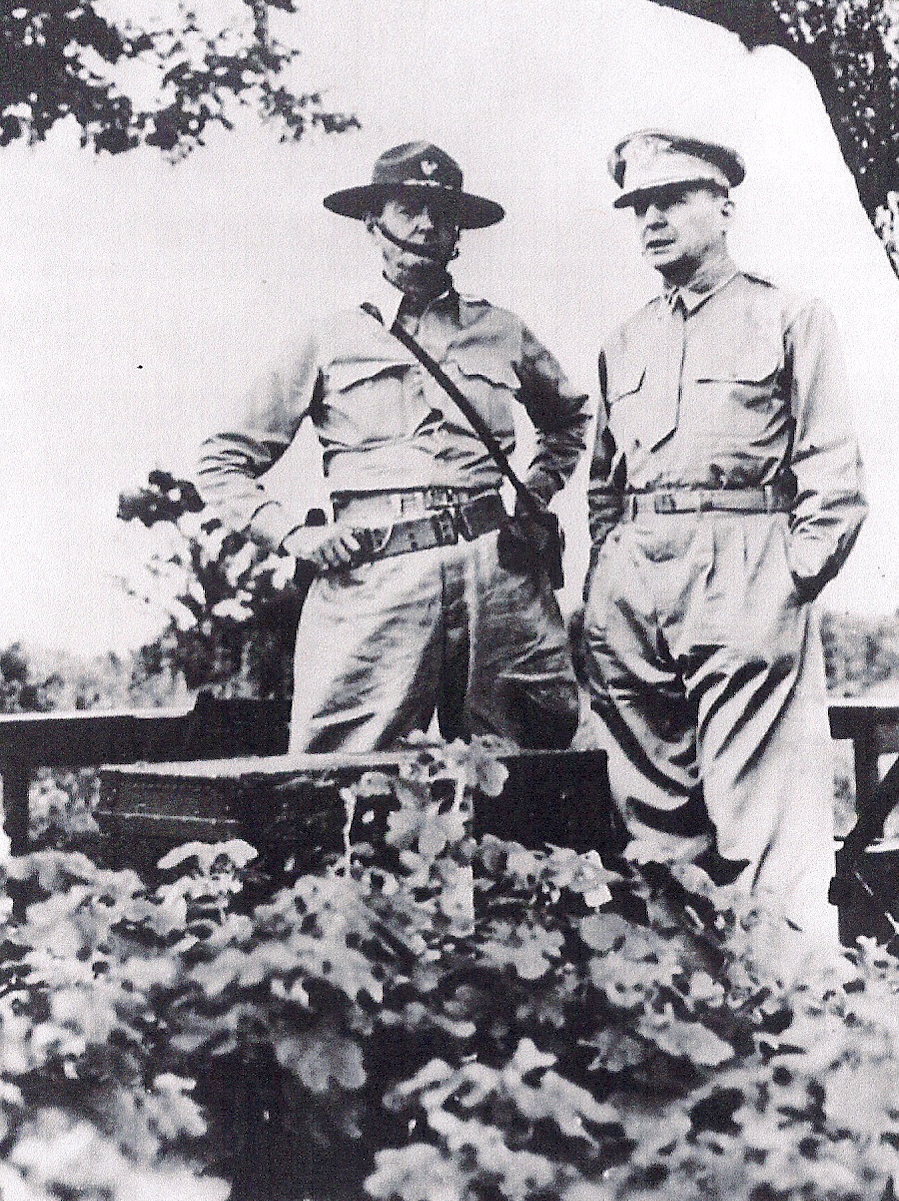
General Wainwright and General MacArthur conferring during the Battle of Bataan. (Courtesy US Army Ft Polk Museum)
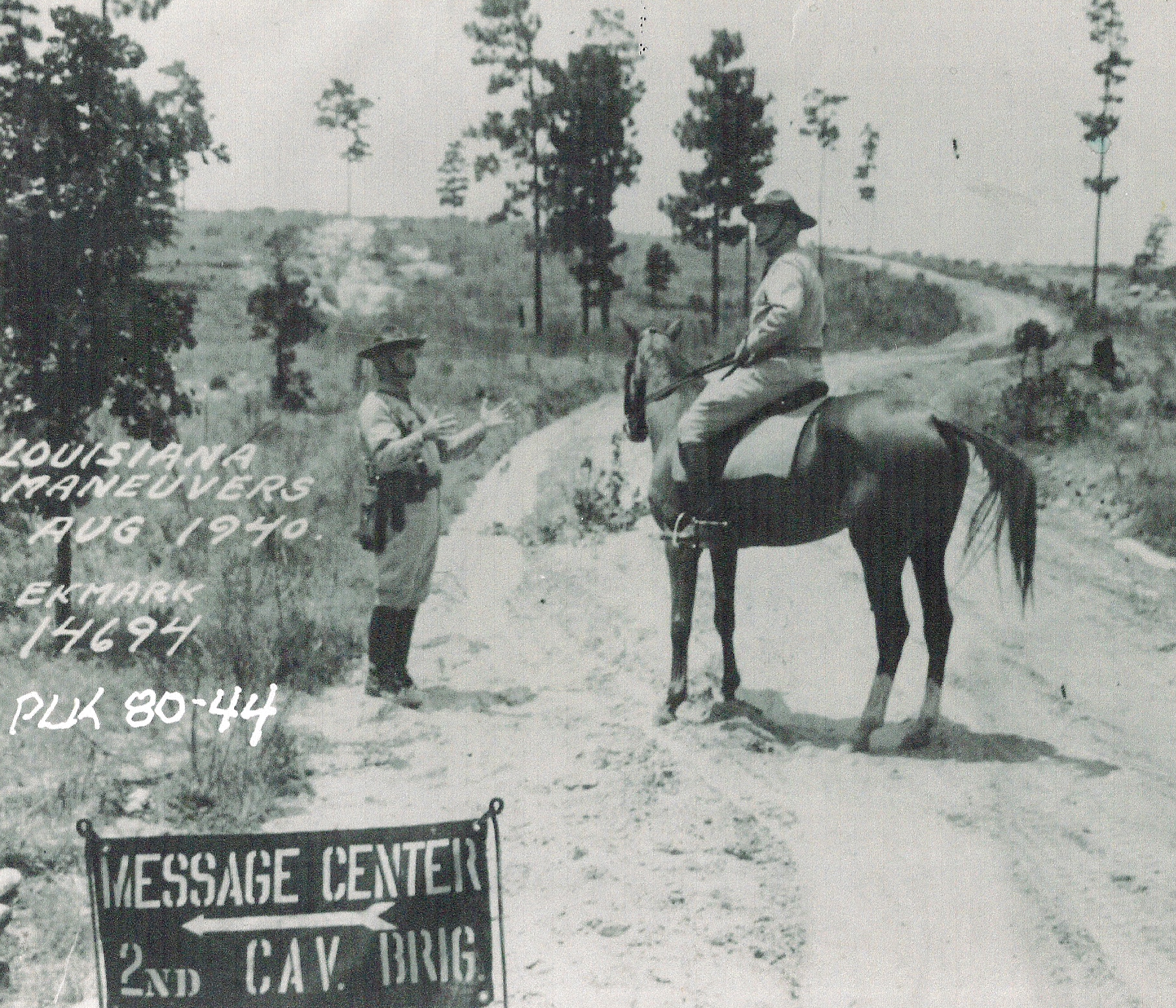
Picture possibly of General Wainwright on horse at 2nd Cavalry Brigade Message Center located on Peason Ridge. He commanded cavalry troops during the 1940 Louisiana Maneuvers. (Courtesy US Army Museum Ft Polk)
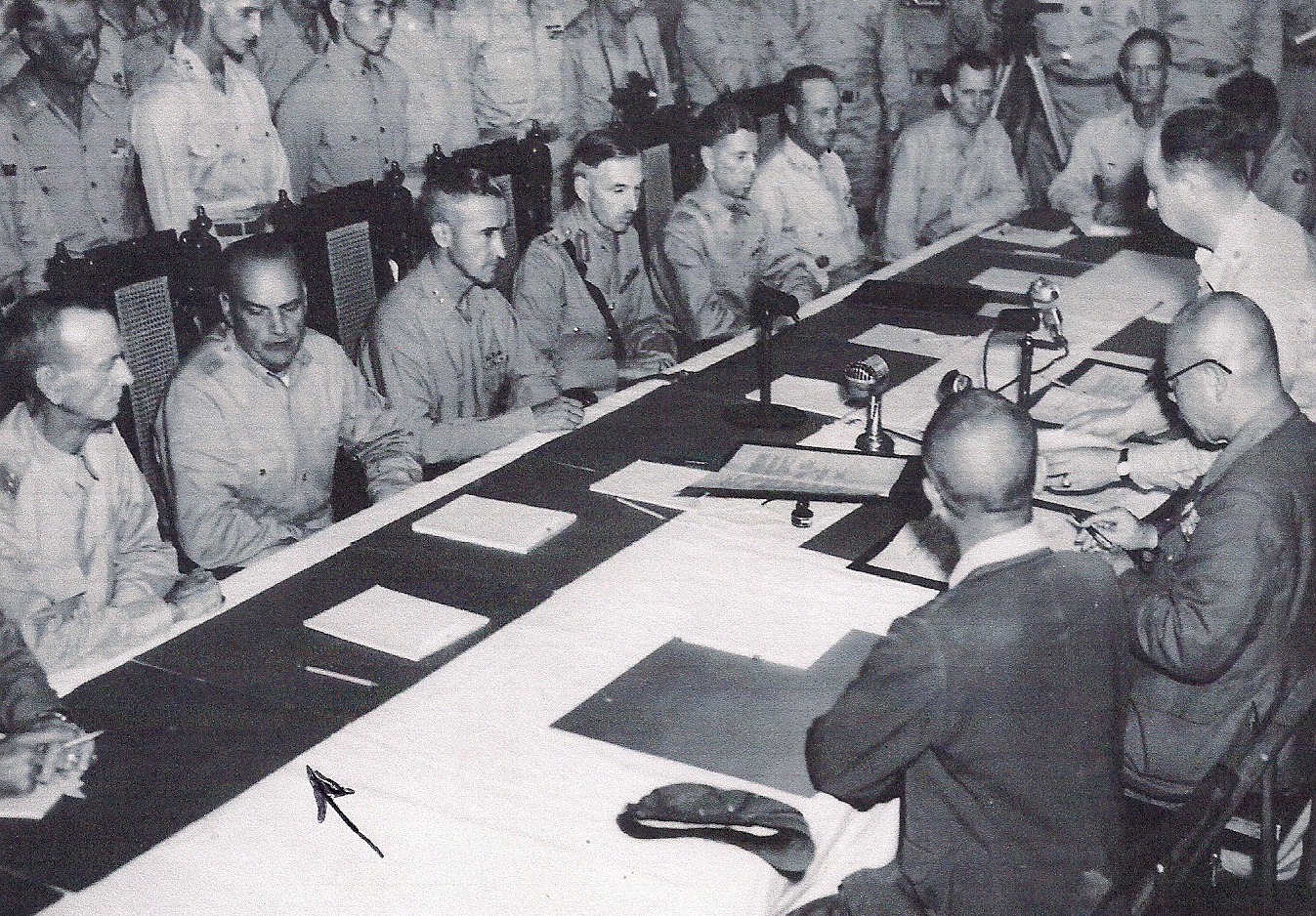
General Wainwright at left with arrow pointing toward him, at the surrender of Japanese General Yamashita in the Philippines. (Courtesy US Army Museum Ft Polk)
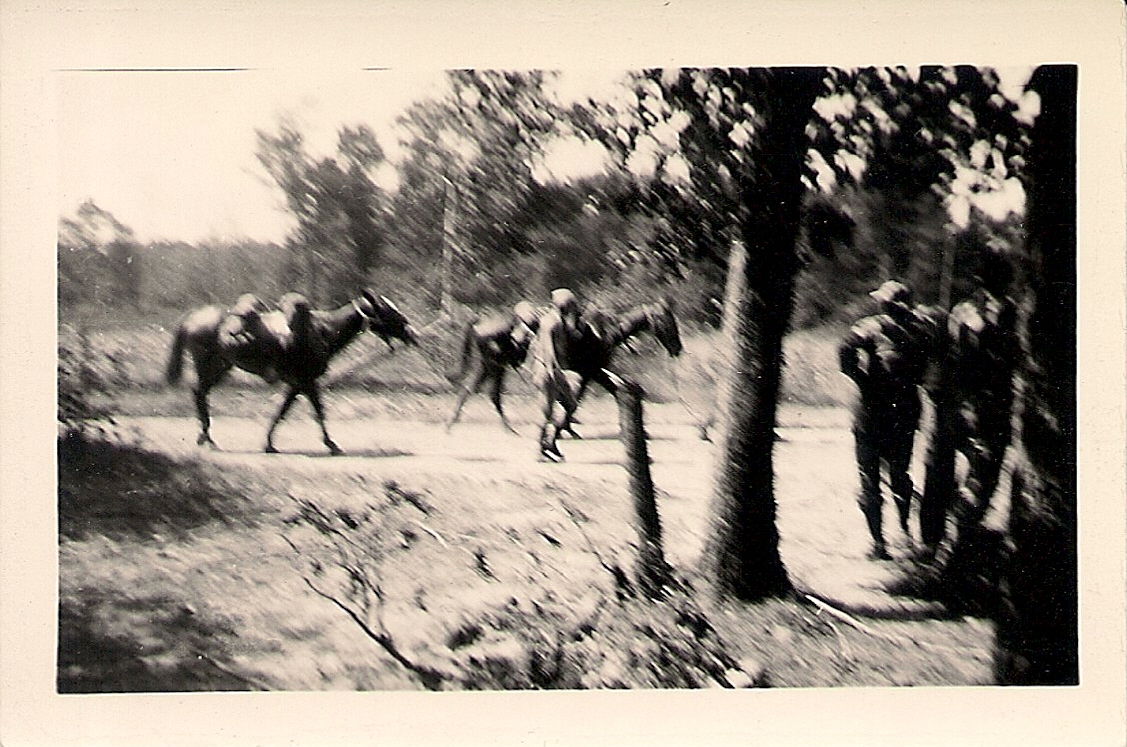 .
.
Mounted National Guard cavalrymen riding and leading their rented farm horses they are using as cavalry mounts in the 1940 Louisiana Maneuvers (Courtesy Rickey Robertson Collection)